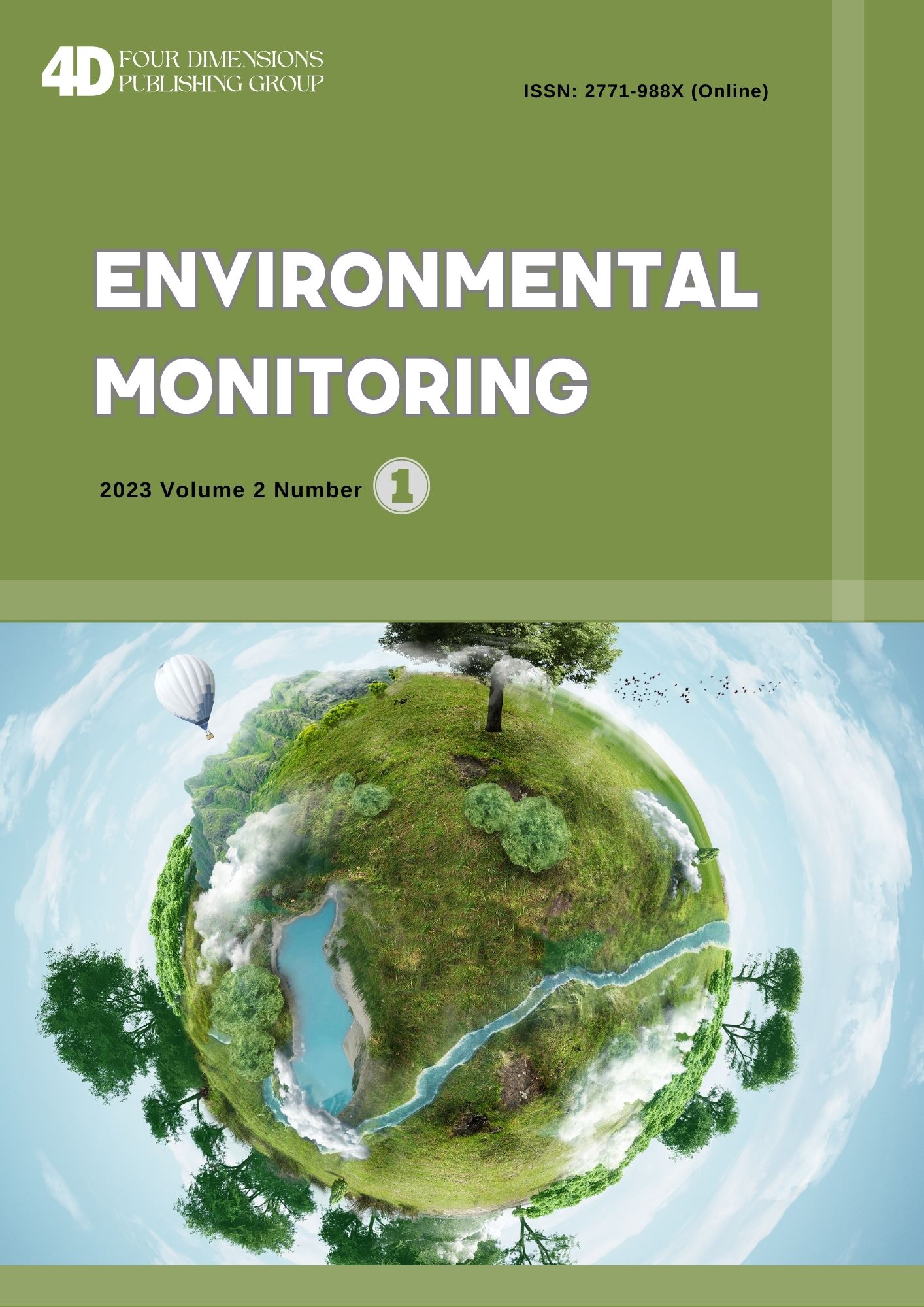
Environmental MonitoringOpen Access
Environmental Monitoring[EM] is an international peer-reviewed journal that publishes original and high-quality research papers in all related areas. All papers published will be open access to all readers. To build a platform for scientific research and academic exchange for scholars, focusing on the development and research, introducing worldwide research, theory and practice, and promoting international exchanges.
ISSN: N/A (Print)
Frequency: Bimonthly
ISSN: 2771-988X (Online)
Website: https://doi.org/10.55571/em
Email:journal@4dpublishinggroup.com /em@4dpublishinggroup.com
Indexing and Abstracting: Google Scholar; CrossRef; ResearchBib; WorldCat; CiteFactor
Email:journal@4dpublishinggroup.com /em@4dpublishinggroup.com
Indexing and Abstracting: Google Scholar; CrossRef; ResearchBib; WorldCat; CiteFactor
Assessment of Water Quality Parameters in Kamle District, Arunachal Pradesh, India
DOI: https://doi.org/10.55571/em.2022.04005
Authors: Bini Kiron*, Sudip Basack and Ghritartha Goswami
Affiliation:
North Eastern Regional Institute of Science and Technology, Nirjuli, Arunachal Pradesh, India
Elitte College of Engineering, Affiliation: MAKA University of Technology, Kolkata 700113, India
Information: Environmental Monitoring. April 2022 Vol.1, No.1, pp 23-26
Authors: Bini Kiron*, Sudip Basack and Ghritartha Goswami
Affiliation:
North Eastern Regional Institute of Science and Technology, Nirjuli, Arunachal Pradesh, India
Elitte College of Engineering, Affiliation: MAKA University of Technology, Kolkata 700113, India
Information: Environmental Monitoring. April 2022 Vol.1, No.1, pp 23-26
Abstract:In the Kamle District of Arunachal Pradesh, rapid constructions, road cutting, excavation, and indiscriminate use of chemical fertilizers and pesticides in agriculture practices are causing a variety of pollution in the aquatic environment, resulting in deterioration of water quality and depletion of aquatic biota. Humans contract water-borne infections such as typhoid and diarrhea as a result of drinking this contaminated water. As a result, it is required to monitor water quality at regular intervals to evaluate if it is suitable for human consumption or other uses such as irrigation, industry, and so on. The results of investigations on various water quality indicators from various water sources in Kamle District, Arunachal Pradesh, are described in this study paper for both the post-monsoon and pre-monsoon periods. pH, temperature, dissolved oxygen, turbidity, total dissolved solids, nitrate, and phosphate, among other physical and chemical water parameters, were tested and researched. The National Sanitation Foundation (NSF) technique was then used to calculate the water quality index. Based on these data, the water from different sources is classified as very bad, bad, medium, good, and excellent. Overall, the quality of water indicates good status as per the study.
Keywords:Multi-meter; Water quality index; Water quality parameters
Cite This Article:Kiron B., Basack S. and Ghritartha G. (2022). Assessment of Water Quality Parameters in Kamle District, Arunachal Pradesh, India. Environmental Monitoring, Vol.1, No.1, pp 23-26
Keywords:Multi-meter; Water quality index; Water quality parameters
Cite This Article:Kiron B., Basack S. and Ghritartha G. (2022). Assessment of Water Quality Parameters in Kamle District, Arunachal Pradesh, India. Environmental Monitoring, Vol.1, No.1, pp 23-26
